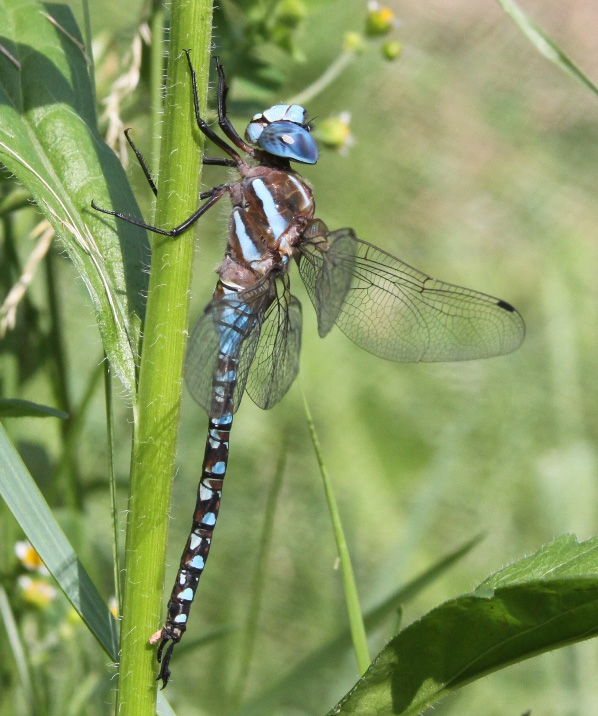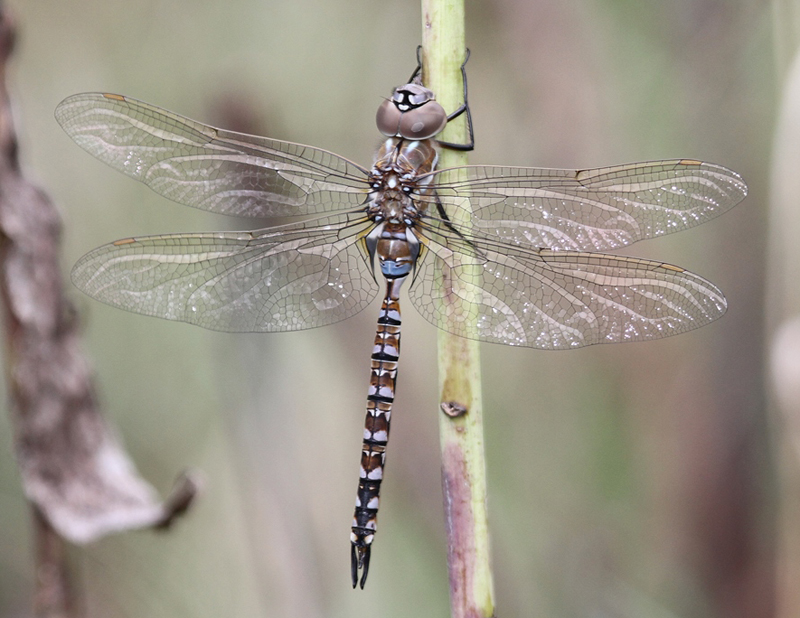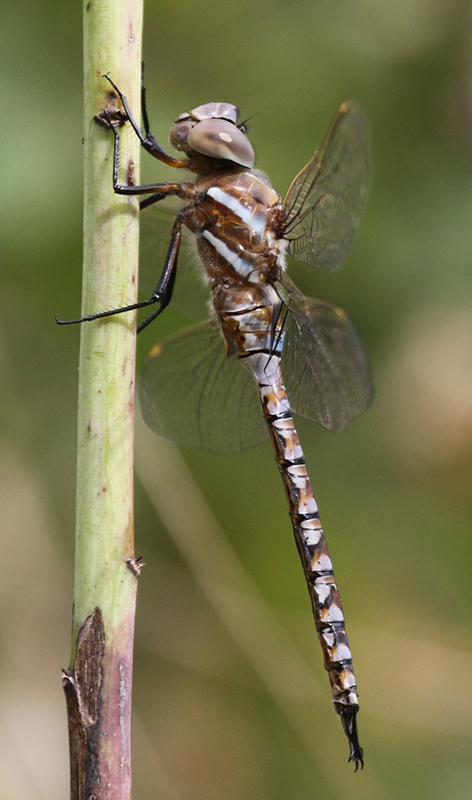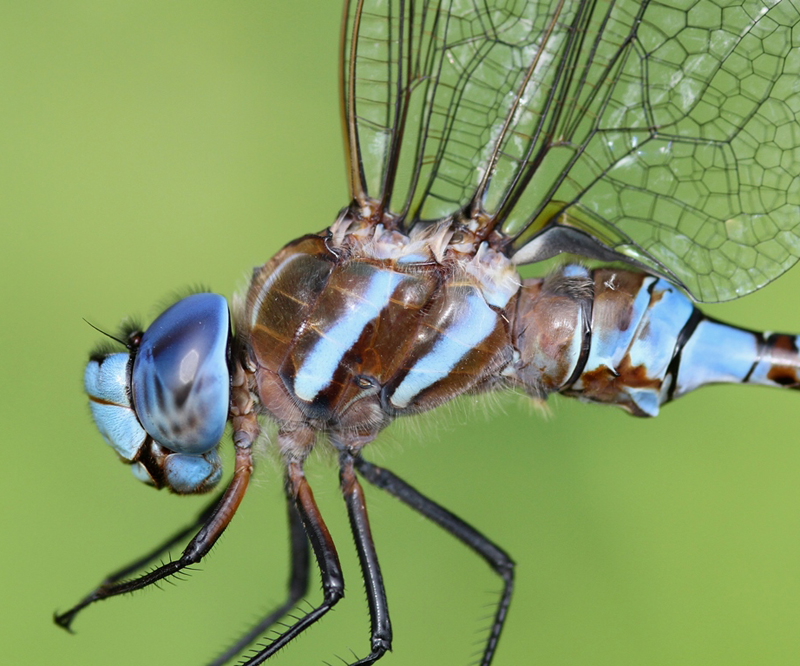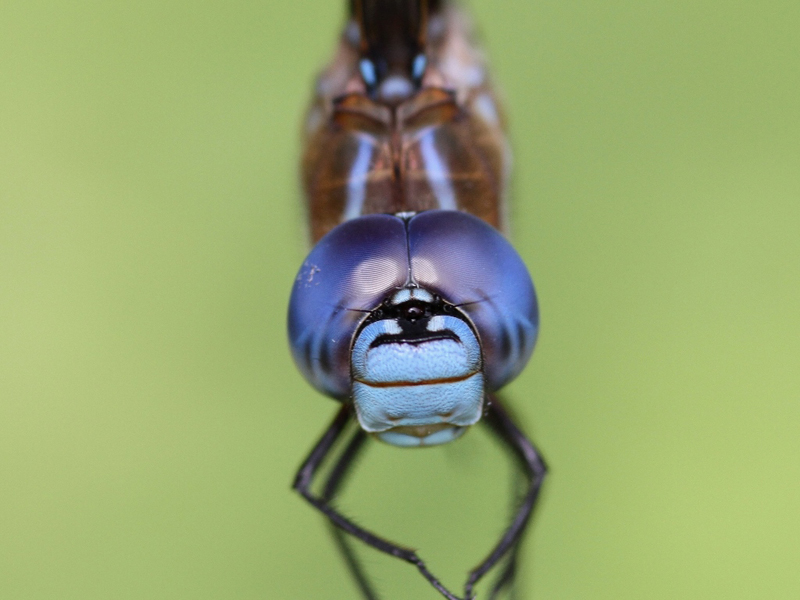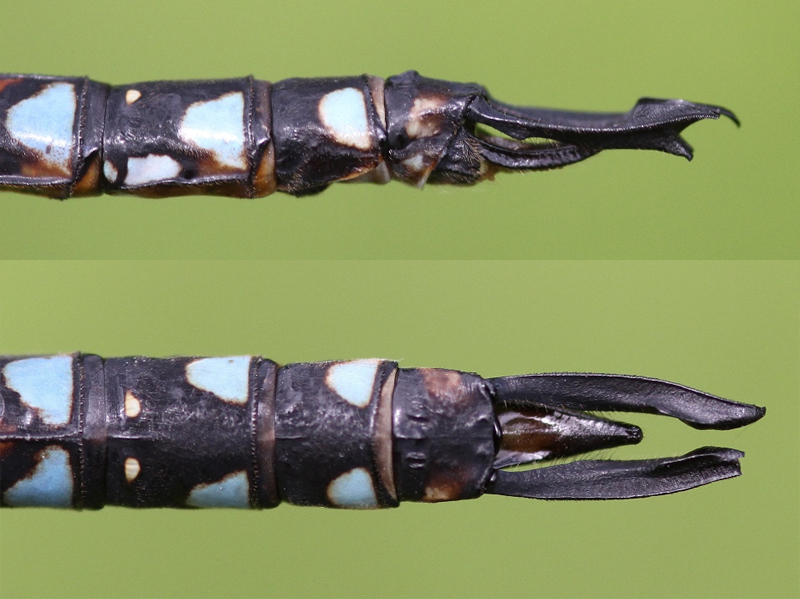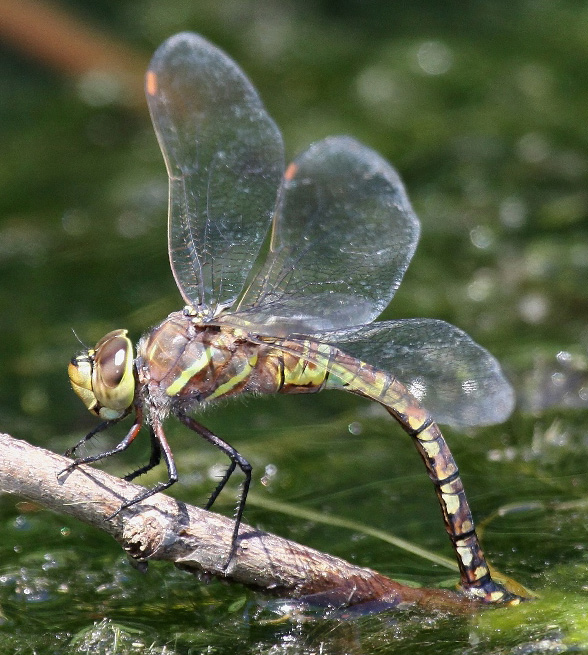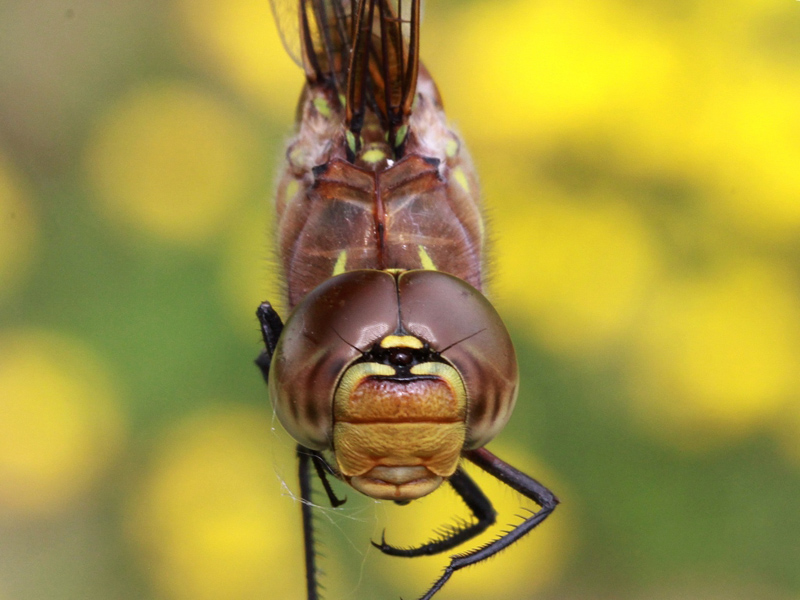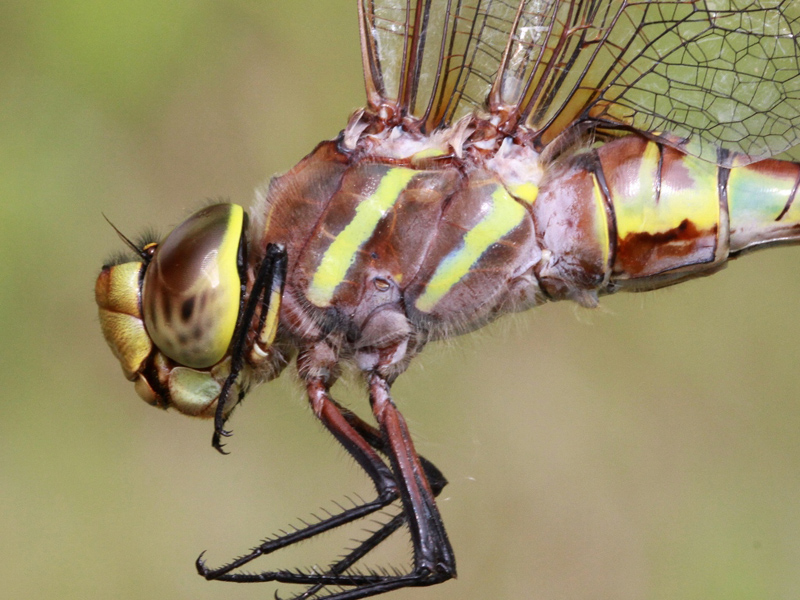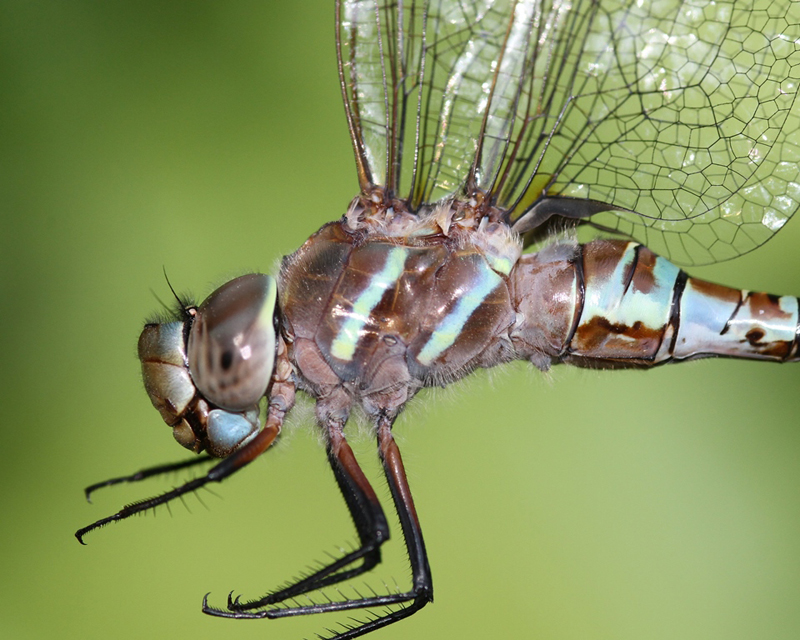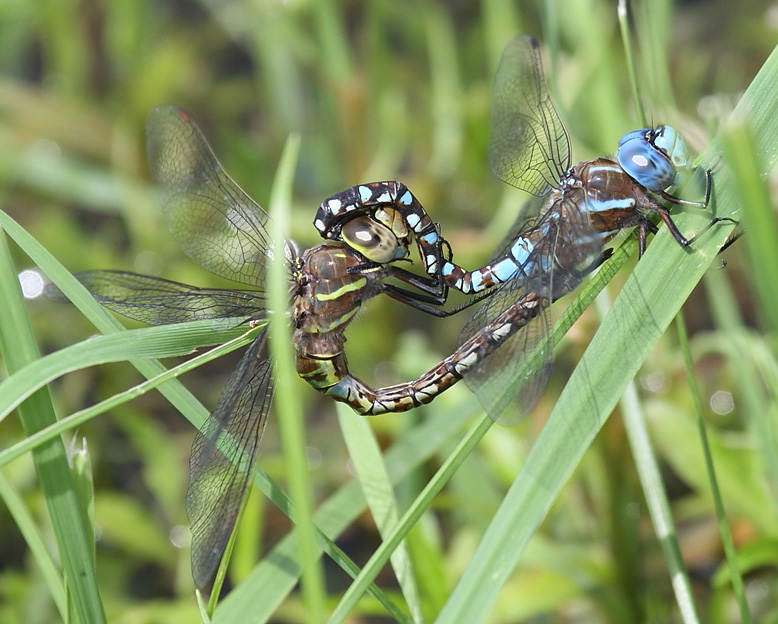




Aeshnidae, Darner Family
"Most Wanted" Species
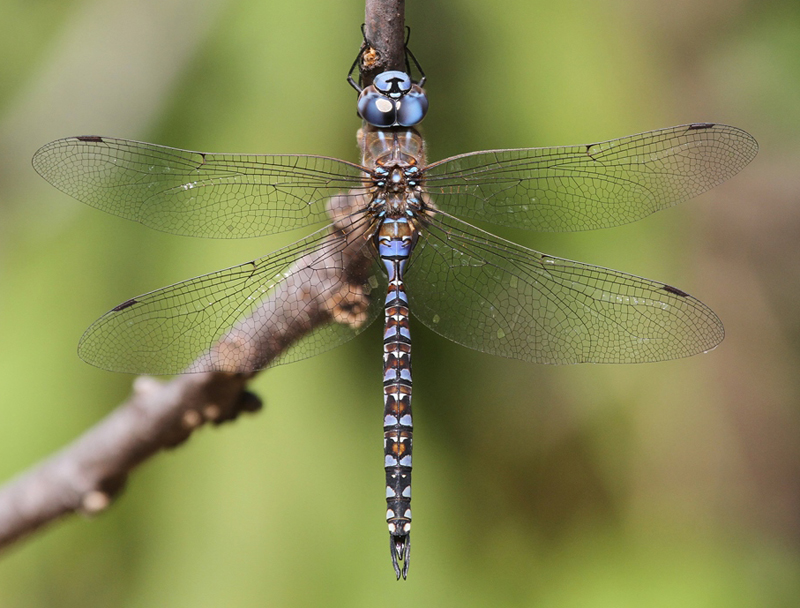
The neotropical darners of the genus Rhionaeschna are very similar to and were formerly classified with the mosaic darners (genus Aeshna). Newly discovered in Wisconsin, the blue-eyed darner is very similar to the spatterdock darner, which is the only other member of the genus Rhionaeschna that is found here (ranges of the two species overlap in Wisconsin). Males of these two species are easy to separate from other darners by their striking blue eyes and by the forked, beak-shaped projections on their upper claspers (cerci). However, males of the two species can be separated from each other only by careful, in-hand examination of the shape of the claspers and the length of the abdomen. Also, the blue-eyed darner flies a bit later in the season than the very early spatterdock darner. Both species are uncommon in Wisconsin and their ranges and habitats need to be better documented. Please report any sightings of darners with blue eyes to this website. Females are difficult to separate from each other and from a number of other darner species. However, genders of both species have a noticeable "bump" (tubercle) in the underside of abdominal segment 1 (S1) that is unique to this genus. Adults fly in an irregular pattern over open fields or large areas of open water.
Status-Global/State:
Distinguishing Characteristics:
Like most darners, blue-eyed darners are relatively large dragonflies. Males have intense blue coloration on the face, eyes, and abdominal spots. The thoracic side stripes of males are fairly straight, relatively narrow, and whitish blue. The distinctively forked male cerci (upper claspers) separate the two Wisconsin species of Rhionaeschna from all other darners (see illustrations in Paulson 2011, p. 200, or DuBois 2010, p. 147). Differences between blue-eyed and spatterdock males are slight, consisting primarily of blue-eyed having a relatively shorter abdomen, slightly narrower and straighter thoracic side stripes, and deeper forks in the cerci (see also Paulson 2011). Females of the two species are very similar: female blue-eyed has a slightly larger tubercle on the underside of S1 and slightly shorter cerci, but examine males with which they are associated to confirm determinations. Females of both species occur in blue (andromorph) and green (heteromorph) forms.
Description of Habitat/Range:
This western species was first discovered in Wisconsin in 2007 by Denny Johnson from a lake in northwestern Eau Claire County. It has since been found at shallow, cattail-rimmed ponds and lake bays in a growing handful of western counties (may be expanding its range in Wisconsin). Elsewhere in its range it is known to frequent a wide variety of ponds, lakes and slow streams with emergent and floating plants, but in the mid-western part of its range it appears to be associated with open landscapes, dense cattail growth and mucky substrates. Studies are ongoing to determine if this species is expanding its range north and east.
Flight Season:
The peak of the flight season is from early June through mid-August. Some individuals emerge later and these can fly well into the fall.
(Click on photos to enlarge)
